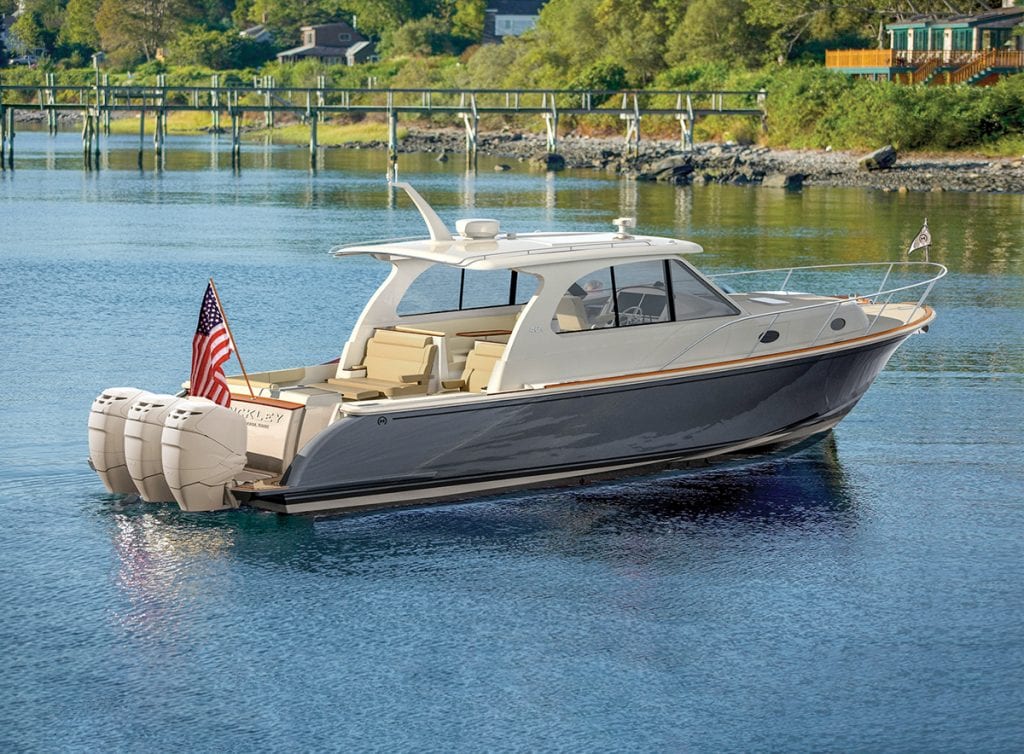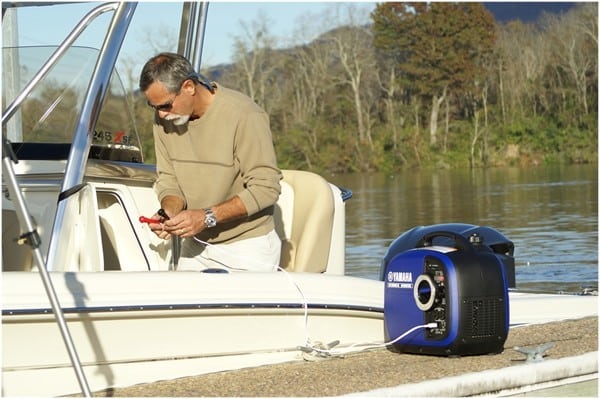Keep your lift in tip-top shape with some davit maintenance
Davits work on boats without fanfare. Akin to heads and air conditioning, no one thinks about davits unless they break. But a davit with a hitch or one that won’t run at all is a major hassle that can ruin a weekend. It’s a sad sight to see a pair of personal watercraft or a tender stuck on a flybridge, high and dry, when there are islands to explore.
Boats larger than 60 feet often need a davit to deploy the tender—it’s often not a luxury but a necessity to get to shore. An 800-pound tender hanging at the end of a 10-foot davit boom is a big structural load vulnerable to forces of wind and sea. It’s easy to see why the routine davit maintenance is vitally important, and why it’s crucial to quickly transfer the tender from one place to another.
Over the past 20 years, hydraulic davits have become the standard on boats and displaced manual boom davits with electric winches. “The market is now hydraulic davits because it’s easier for the operator to use,” explains Garnett Byrd, president of MarQuipt, based in Pompano Beach, Florida. “Electronic drum winches are loud and subject to bird nesting where the cable wraps around on itself, while hydraulics are quiet, and the linear cable system keeps the cable from wrapping on a drum. You can add power rotation, and the boom can elevate and extend while the tender is in the air to increase flexibility and ease of use. All those features add up fast to make hydraulics preferable.”
Use it or Lose it
Exercising your davit offers a host of advantages and helps you notice a potential problem. Running it lubricates all the internal parts, including the valves, pistons, cylinders, and seals. The easiest davit maintenance? Run the davit weekly, or even monthly, to avoid problems well before they start. “Problems can arise from an incomplete freshwater wash down,” says Byrd. “Remember to rinse the inside of the davit and not just the outside of the davit. Shoot fresh water through the head of the davit when on an angle so it washes down the inside components (cable, pulley sheaves, fittings, hydraulic cylinder bodies, etc).”
Be careful not to overload the davit. Know its lifting weight capability and also the weight of the tender complete with engine, fuel, fresh water, battery, fire extinguisher, and options such as a trolling motor and outboard engine jack.
Exercising the davit also helps keep you trained and ready for proper operation. If the first time you use the davit to launch a tender is in a remote location, this is a recipe for disaster. You can operate remote models with one hand, but it’s important to be comfortable with the operation before you attempt a lift.
The Issues
Davits may have by three types of problems: electrical, hydraulic and mechanical. How boat owners and operators address these problems depends upon the urgency of the situation. Is it something you discovered at the dock during downtime, or are you on a cruise and need to fix the problem to stay operational? “Electrical problems can often be the simplest things,” Byrd explains. “The first place to look is where you plug in your controller; check the male and female connection points.
This may be more troubleshooting than davit maintenance, but if one function gives you a problem, check the wires on the back and make sure they are connected and not broken. Spray corrosion inhibitor on the connections as a routine maintenance function to make sure that doesn’t become a problem.”
With hydraulic issues, air or debris that gets into the lines can hinder operation. “Hitching, balky or inconsistent movement may be a sign that air or debris has gotten into hydraulic oil,” says Byrd and adds that low hydraulic oil can contribute to these problems. “A little piece of debris in the system can intermittently prohibit the flow of oil to the valves. Maintain fluid levels by checking the hydraulic power unit and run the davit regularly.
The Solutions
If you have the skill, disassemble the valve and look inside for obstruction. Keep an eye out for leaks—obviously, any oil leak is a sign something is wrong.” Byrd suggests that boat owners can perform basic davit maintenance, such as the addition of hydraulic fluid, inspection of electrical connections and lifting cables for mechanical problems. But a qualified marine service yard should handle more advanced mechanical jobs such as the replacement of said cable or hydraulic lines and flushing and changing hydraulic oil.
As a final tip, when you rinse the outside of the davit, keep an eye for chipped or peeled paint. “Davits are typically painted aluminum, and we have isolation between dissimilar metals like stainless steel nuts, bolts and screws,” says Byrd. “If there are any paint scratches or chips, make sure you touch up those areas to avoid long-term paint oxidization.”
By Don Minikus, Southern Boating
November 2018













